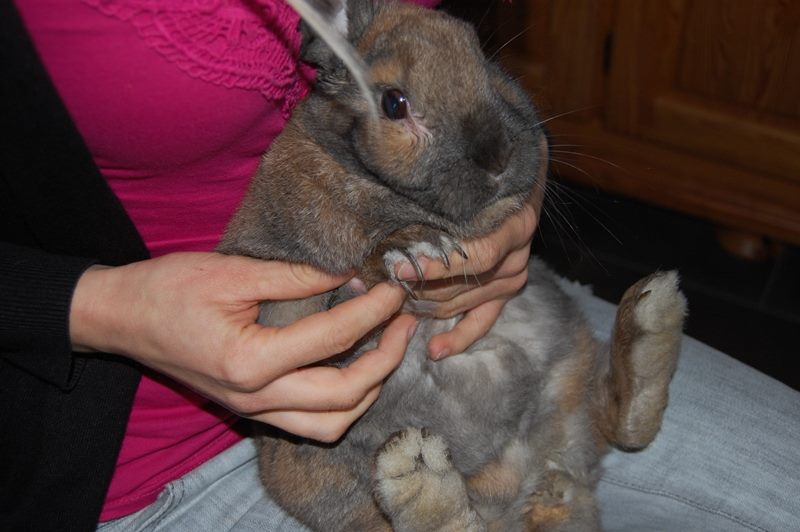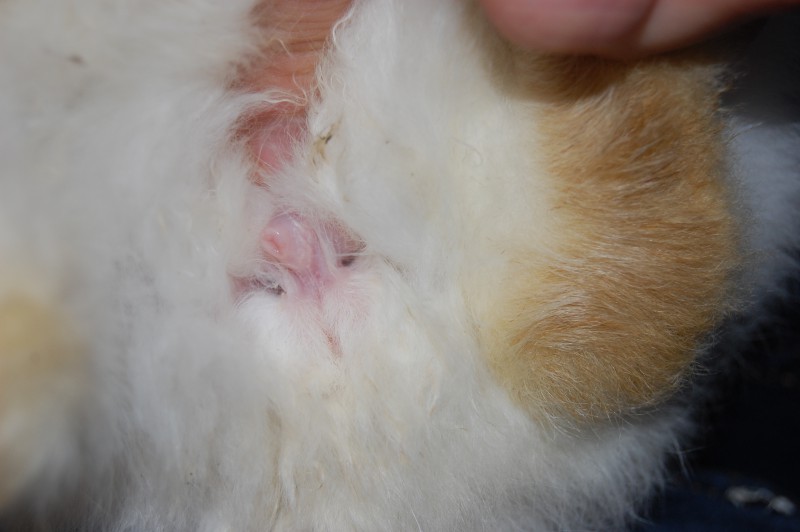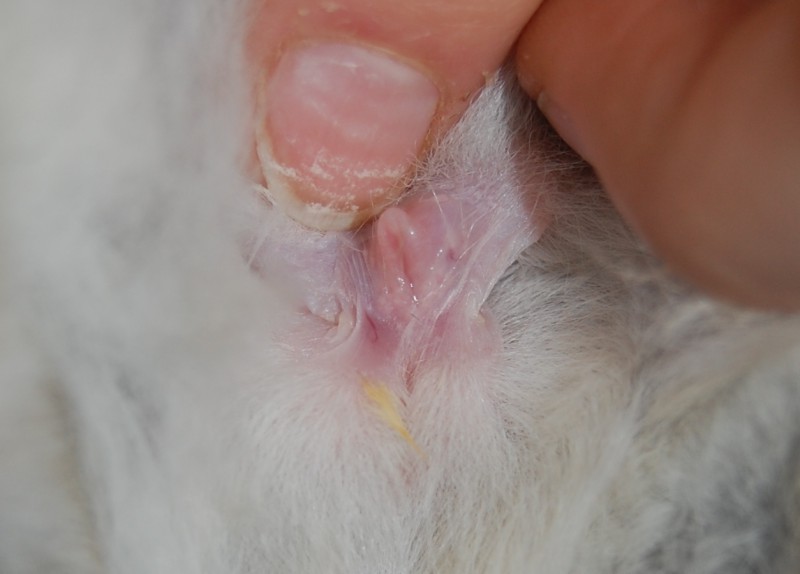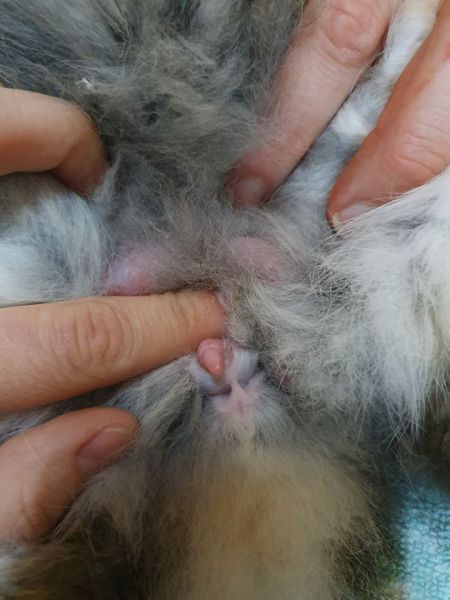
Hardly anything causes as many problems as the gender determination of domestic rabbits. It would be the best to determine the gender of your rabbit by two independent persons with experience and then control it one more time by yourself (for example from the breeder or animal shelter the rabbit came from and in addition by the veterinarian).
If mistakes are made in the gender determination it might have fatal consequences. Almost always it comes to incompatibilities (e.g. heavy fights in uncastrated bucks, which can seriously get hurt) or unwanted offspring, often with related rabbits (e.g. siblings), which results in uncontrolled inbreeding.

The sex is best determined by grasping the rabbit under the rib cage and with the other hand under the bottom, turning it on the back, setting it on the lap and now fixing the front legs with the hand, which previously lay on the rib cage. A second person should now be able to see the sex well.
Experts are sometimes able to determine the gender on the first day after birth, but this is very stressful for the newborn and therefore not recommended. After that, gender determination is only possible later (between the third and fourth week of life), the sex of full-grown rabbits is easier to determine than that of a young rabbit.

No matter if male or female: it is necessary to push softly with one finger above the genital, so that it is possible to recognize the gender. With the other hand it’s best to pull the range below the genital toward the rabbits tail. The skin without fur in the fold to the right and left of the genitals are the gender corners, by the way. They are often smeared with secretion, so it could be necessary to clean them gently. The testicles are located parallel to the gender corners.

By pushing softly above the genital opening of a female, the genital comes out above the anus. Many laymen mix this up with the penis of a buck, but the slot indicates a female. The picture shows a female just before sexual maturity.

By doing the same with a buck, the penis emerges. It doesn nott have such a long slot (with the exception of rabbits with congenital malformations, the so- called slot-penis). The picture shows a buck at the age of eleven weeks.
In young bucks there are no testicles present (to the right and the left of the genital). In castrated bucks, the testicles are significantly less pronounced compared to uncastrated ones (or rather the testicles regresses after castration). All bucks are able to retract their testicles (especially if you take them up). Therefore:
- Rabbits with testicles are certainly bucks
- Rabbits without testicles can be bucks or does


Here you can find further highly recommended pictures to determine gender:
http://www.medirabbit.com/EN/Uro_gen_diseases/Male_rabbit/Split/Split_en.htm
https://www.raising-rabbits.com/sexing-rabbits.html
Attention: Split Penis




Sexual maturity

Male rabbits of small races reach sexual maturity at the age of three to four months, male rabbits of middle races at the age of five to seven months and big ones at about seven to twelve months.
It is more complicated with females. The females born in fall are supposed to be sexually mature at the age of about 5 months, the ones born in spring with 8,5 months but there are no reliable figures, because the sexual maturity is subjected to strong fluctuations. As a precuation it is useful to assume a sexual maturity at the age of 14-16 weeks.
The mounting by a buck is not a sign of sexual maturity, because it usually comes up before sexual maturity. On the one hand as a ranking manner, on the other one also „for exercise“, but it cannot get to a fertilization by doing that.
At the age of 12 weeks rabbits should be separated by gender to avoid unwanted offspring! An alternative solution could be to castrate the buck befor the 12 th week of life (early castration). Then they can stay with females. Von: etepetete
Translation: etepetete




















